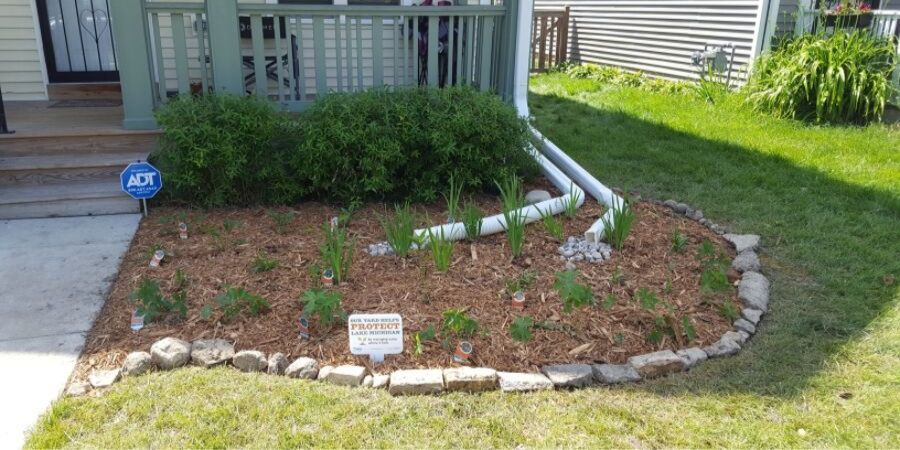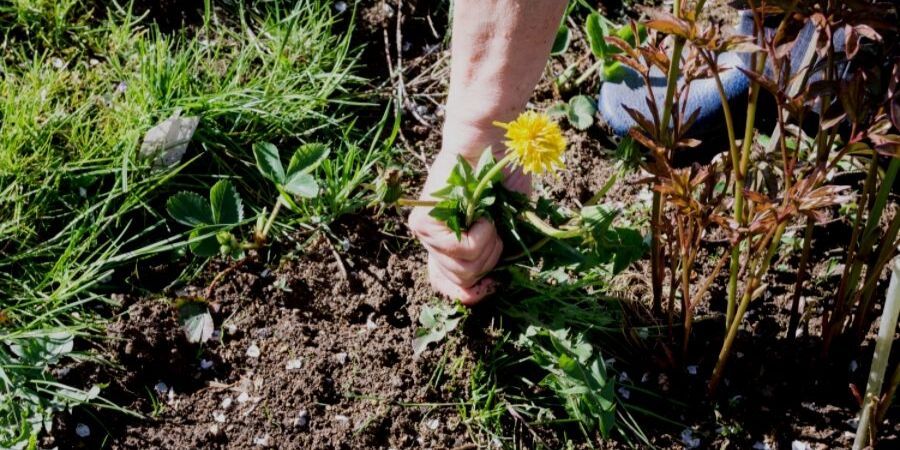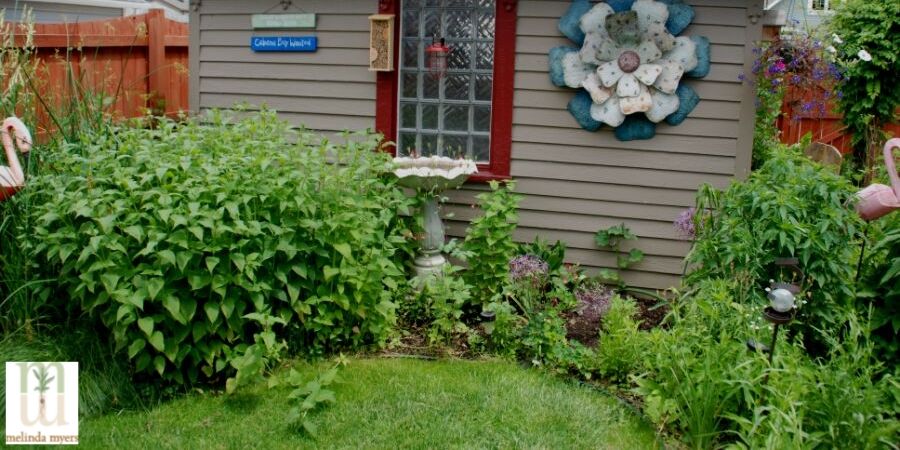How to Maintain Your Rain Garden
- horticulturist and gardening expertAugust 17, 2019
Thanks for helping protect our waterways and reduce flooding by planting a beautiful rain garden. Growing a healthy rain garden helps manage stormwater by keeping rainwater where it falls. And although rain gardens are filled with low-maintenance native plants, they are not maintenance-free. Investing time while plants become established during a few key times each year will keep your plants healthy and your garden looking its best.

Water
It takes perennials like your rain garden plants several years to get established. Make sure to water plants thoroughly when the top few inches of soil are dry, especially during for the first two years. Your new plantings need an average of one inch of water each week, from rainfall, irrigation or a combination of the two.
Plants that appear wilted during the day but perk up in evening generally do not need watering. Water those that remain wilted. Give these plants a good soaking early in the morning whenever possible to minimize water lost to evaporation and the risk of disease.
Deep and less frequent watering encourages deep roots that are better able to tolerate flooding and drought. Avoid frequent shallow watering that results in shallow roots that are more susceptible to drought.
Once established, your rain garden will only need watering during droughts. As always water thoroughly and early in the day whenever possible.
Weeds
Remove weeds as soon as they appear. They will be easier to pull and won’t have a chance to set seed creating more weeds for you to pull next year. These unwanted plants are not only unsightly but also compete with your rain garden plants for light, nutrients, and water. Plus many are a host for insect pests and disease.

Regular weeding also helps you better identify weeds making it easier to differentiate between your rain garden plants and the weeds. This is especially helpful in spring as plants emerge and you only have leaves to use for identification. Trust me, I receive lots of samples from gardeners wondering if something in their garden is a weed that should be removed or a plant they should keep. The Weed Science Society of America has a listing of and links to helpful weed identification resources for agronomic (this is what you want), turf and invasive plants.
Speaking of invasive plants, eliminate these as soon as they are found. These unwanted plants not only take over the garden but escape our landscapes and invade natural spaces such as wetlands and woodlands. They crowd out native plants used by insects, birds, and wildlife for food, shelter and raising their young.
Avoid adding to the weed problem by pointing the mower shoot away from the garden when mowing near your rain garden. This keeps the grass and weed seeds in the lawn and out of the garden. Plus grass clippings are high in nitrogen; good for the lawn but not for the rain garden. Adding unnecessary nutrients and plant debris can interfere with the garden’s efficient reduction of pollution from rainwater.
Mulch
Add a 2-inch layer of shredded hardwood mulch at planting. Shredded mulch tends to stay put and doesn’t float as readily as other types of organic mulches during the wet periods in your garden.
Don’t pile mulch over the base of plants as this can lead to root and crown rot. As the plants grow and fill the garden you will need very little or no mulch at all.
Clean Up
Remove leaves and debris that collect in the garden, collect in the swale leading to the garden or block the inflow of water into the garden. Compost leaves and dispose of debris instead. Inspect and remove any soil sediment that accumulates near the water inflow.
Remove pet waste from the lawn and garden. Research shows that pet waste is a major cause of disease-causing bacteria that ends up in our waterways. The bacteria can make waterways unsafe for our recreational use.
Allow healthy plants to stand for winter. This increases their winter hardiness and helps capture snow so it melts in place instead of running into the storm sewer. Don’t plow snow into the garden or use plant damaging de-icing salt in or near your rain garden. Use plant-friendly deicing salt if needed to maintain safe walking surfaces.
Standing perennials also add motion and texture to the winter landscape. They provide winter homes for many beneficial insects that pollinate plants and manage insect pests. Many of their seeds attract and feed the birds.
In spring, prune the dead stems back to ground level. Remove the plant debris from the garden and add it to your compost pile.
Fertilization
Rain gardens are designed to absorb excess nutrients from the water before it enters the groundwater. This usually provides the needed nutrients so no additional fertilizer is needed.
Have your soil tested if the leaves are pale, plants are stunted and you suspect the cause is a nutrient deficiency. If fertilizer is recommended, consider using a low nitrogen slow release fertilizer like Milorganite. It releases small amounts of nutrients over several months promoting slow steady above and belowground growth. This minimizes the risk of interfering with the plants’ and garden’s ability to manage the nutrients and pollutants in the water entering the garden.

Thinning, Replacing and Trimming Rain Garden Plants
Once established native plants can quickly grow and may need dividing every few years to maintain the function and beauty of your rain garden. Spring and late summer are great times to dig and divide overgrown plants as needed. Place one of the divisions back in the original space and use the others to create new gardens or fill voids in existing gardens.
This is also the best time to replace any struggling plants. Select one more suited to the moisture level in that section of the garden. Correct any issues causing erosion in the garden before replacing erosion damaged plants.
Manage plant size and floppiness, if needed, with a bit of early-season pruning. You can cut tall fall-blooming perennials back by half. This will delay flowering but encourage more compact sturdy growth. Or intersperse sturdy grasses between perennial flowers that tend to flop. The grasses will help support the plant eliminating the need for pruning or staking.
Maintenance starts when planting and establishing your rain garden plants. Invest a bit of time keeping plants healthy and garden functioning with minimal routine maintenance. Then enjoy the benefits rain gardens provide; reducing the risk of flooding, basement backup, and water pollution.

